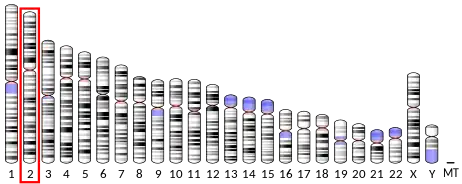| KLHL41 | |||||||||||||||||||||||||||||||||||||||||||||||||||
|---|---|---|---|---|---|---|---|---|---|---|---|---|---|---|---|---|---|---|---|---|---|---|---|---|---|---|---|---|---|---|---|---|---|---|---|---|---|---|---|---|---|---|---|---|---|---|---|---|---|---|---|
| Identifiers | |||||||||||||||||||||||||||||||||||||||||||||||||||
| Aliases | KLHL41, KBTBD10, Krp1, NEM9, SARCOSIN, kelch like family member 41 | ||||||||||||||||||||||||||||||||||||||||||||||||||
| External IDs | OMIM: 607701 MGI: 2683854 HomoloGene: 4421 GeneCards: KLHL41 | ||||||||||||||||||||||||||||||||||||||||||||||||||
| |||||||||||||||||||||||||||||||||||||||||||||||||||
| |||||||||||||||||||||||||||||||||||||||||||||||||||
| |||||||||||||||||||||||||||||||||||||||||||||||||||
| |||||||||||||||||||||||||||||||||||||||||||||||||||
| Wikidata | |||||||||||||||||||||||||||||||||||||||||||||||||||
| |||||||||||||||||||||||||||||||||||||||||||||||||||
Kelch repeat and BTB domain-containing protein 10 is a protein that in humans is encoded by the KBTBD10 gene.[5][6]
References
- 1 2 3 GRCh38: Ensembl release 89: ENSG00000239474 - Ensembl, May 2017
- 1 2 3 GRCm38: Ensembl release 89: ENSMUSG00000075307 - Ensembl, May 2017
- ↑ "Human PubMed Reference:". National Center for Biotechnology Information, U.S. National Library of Medicine.
- ↑ "Mouse PubMed Reference:". National Center for Biotechnology Information, U.S. National Library of Medicine.
- ↑ Taylor A, Obholz K, Linden G, Sadiev S, Klaus S, Carlson KD (Apr 1999). "DNA sequence and muscle-specific expression of human sarcosin transcripts". Mol Cell Biochem. 183 (1–2): 105–12. doi:10.1023/A:1006824331819. PMID 9655184. S2CID 22774237.
- ↑ "Entrez Gene: KBTBD10 kelch repeat and BTB (POZ) domain containing 10".
Further reading
- Foster LJ, Rudich A, Talior I, et al. (2006). "Insulin-dependent interactions of proteins with GLUT4 revealed through stable isotope labeling by amino acids in cell culture (SILAC)". J. Proteome Res. 5 (1): 64–75. doi:10.1021/pr0502626. PMID 16396496.
- Gerhard DS, Wagner L, Feingold EA, et al. (2004). "The Status, Quality, and Expansion of the NIH Full-Length cDNA Project: The Mammalian Gene Collection (MGC)". Genome Res. 14 (10B): 2121–7. doi:10.1101/gr.2596504. PMC 528928. PMID 15489334.
- Strausberg RL, Feingold EA, Grouse LH, et al. (2003). "Generation and initial analysis of more than 15,000 full-length human and mouse cDNA sequences". Proc. Natl. Acad. Sci. U.S.A. 99 (26): 16899–903. Bibcode:2002PNAS...9916899M. doi:10.1073/pnas.242603899. PMC 139241. PMID 12477932.
- Lim DS, Roberts R, Marian AJ (2001). "Expression Profiling of Cardiac Genes in Human Hypertrophic Cardiomyopathy: Insight Into the Pathogenesis of Phenotypes". J. Am. Coll. Cardiol. 38 (4): 1175–80. doi:10.1016/S0735-1097(01)01509-1. PMC 2776821. PMID 11583900.
- Spence HJ, Johnston I, Ewart K, et al. (2000). "Krp1, a novel kelch related protein that is involved in pseudopod elongation in transformed cells". Oncogene. 19 (10): 1266–76. doi:10.1038/sj.onc.1203433. PMID 10713668.
- Hillier LD, Lennon G, Becker M, et al. (1997). "Generation and analysis of 280,000 human expressed sequence tags". Genome Res. 6 (9): 807–28. doi:10.1101/gr.6.9.807. PMID 8889549.
External links
- KBTBD10 human gene location in the UCSC Genome Browser.
- KBTBD10 human gene details in the UCSC Genome Browser.
This article is issued from Wikipedia. The text is licensed under Creative Commons - Attribution - Sharealike. Additional terms may apply for the media files.




